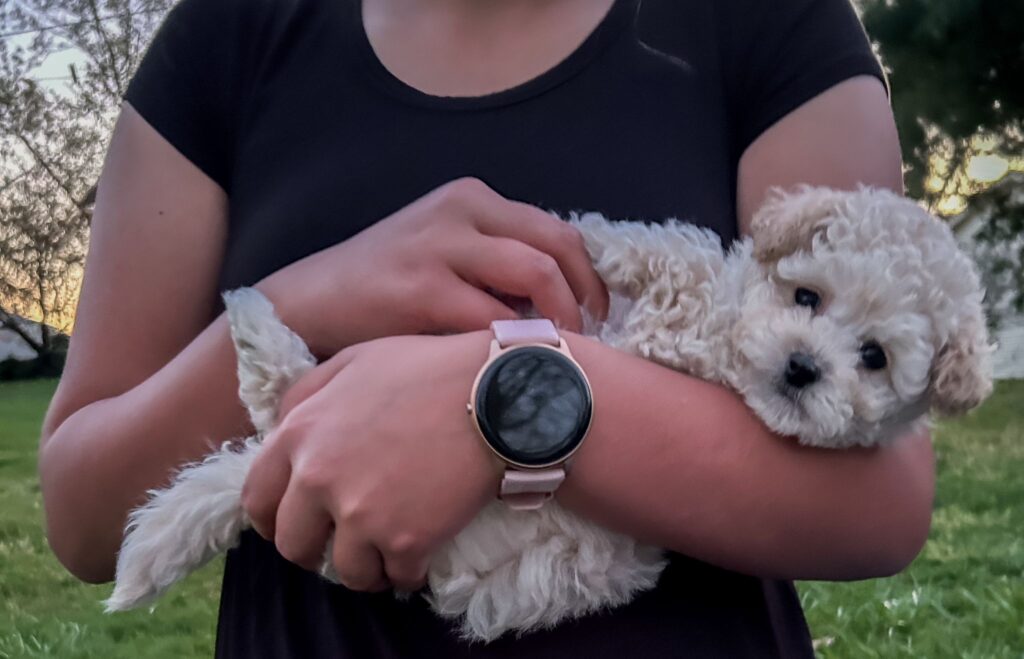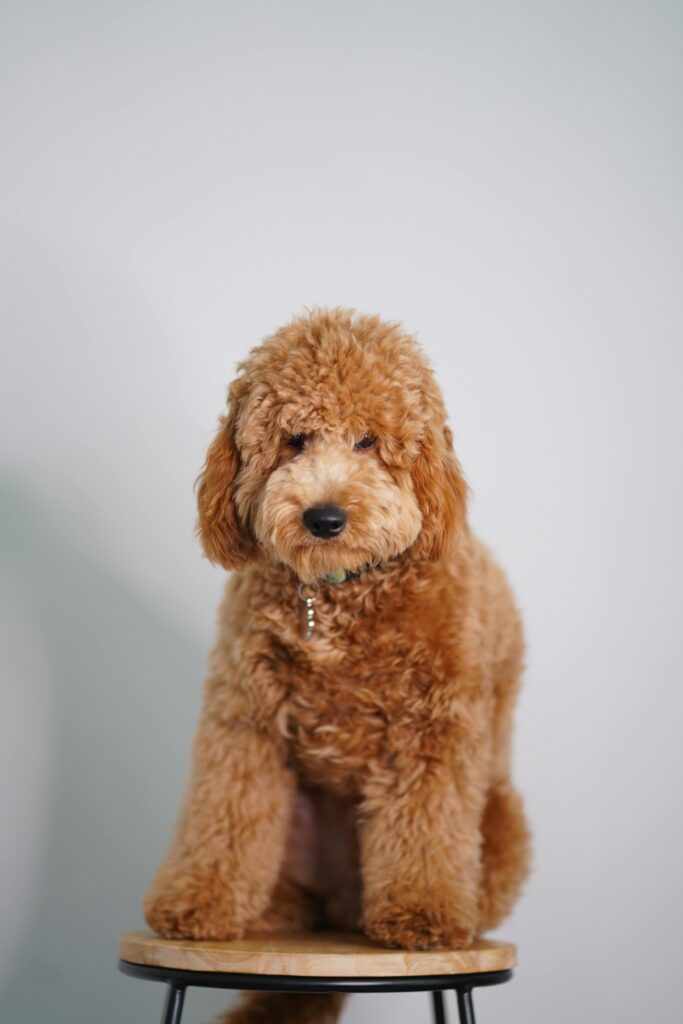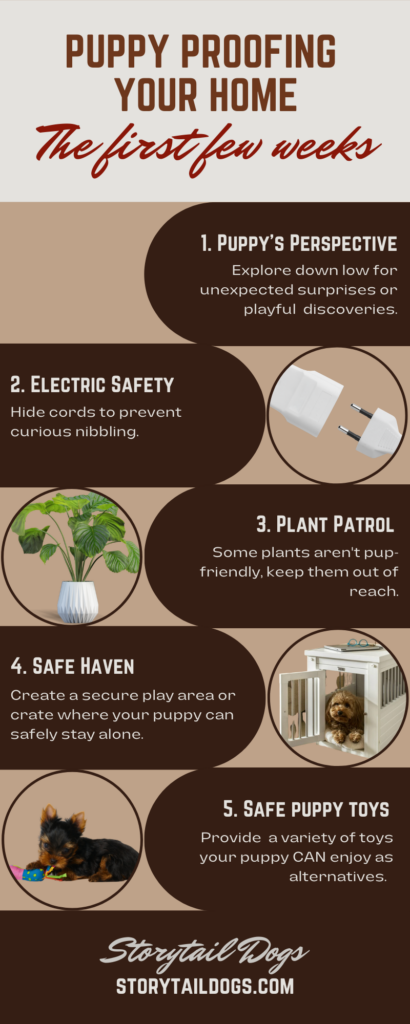Meet Our Available Puppies
Find the perfect ‘tail’ for your story!
The Puppy You've
Been Waiting For.
Product Title Here
Put a bird on it tumblr trust fund sustainable williamsburg green juice.
Product Title Here
Put a bird on it tumblr trust fund sustainable williamsburg green juice.
Product Title Here
Put a bird on it tumblr trust fund sustainable williamsburg green juice.
Product Title Here
Put a bird on it tumblr trust fund sustainable williamsburg green juice.
Product Title Here
Put a bird on it tumblr trust fund sustainable williamsburg green juice.
Product Title Here
Put a bird on it tumblr trust fund sustainable williamsburg green juice.
January 26, 2025

Welcoming a puppy into your home is an exciting milestone, filled with joy and energy. However, managing their energy levels can be challenging, especially when dealing with puppy overstimulation. New puppy parents often struggle with creating a balanced routine for their furry companions, but understanding overstimulation in puppies and implementing a well-structured schedule can make a big difference.
In this guide, we’ll explore what causes overstimulation in puppies, its impact, and how to establish a new puppy routine, including a morning routine with puppy, daily activities, and even a relaxing puppy bedtime routine.
How much sleep does a Puppy Need?
An 8-week-old puppy needs a significant amount of sleep in their new puppy routine—usually between 18 to 20 hours each day. If you’re wondering how much sleep does a puppy need, the answer varies based on their age, but young puppies, like those at 8 weeks, require much more rest than adult dogs. Sleep is essential for their rapid growth and development, allowing their bodies to recharge and their brains to process all the new experiences they encounter.
So, how much sleep does an 8-week-old puppy need specifically? After the puppy morning routine, most of their day will be spent napping, with short bursts of activity in between. This pattern is normal and necessary, as proper sleep supports their immune system, builds resilience, and aids in emotional stability. Ensuring your puppy gets enough rest prevents issues like overtiredness or overstimulation. By establishing a predictable routine, you’ll help your puppy meet their sleep needs and grow into a happy, healthy companion.
Understanding how much sleep does a puppy need and working it into your puppy’s daily schedule is one of the most important steps you can take for their well-being.

What Is Puppy Overstimulation?
Puppy overstimulation occurs when a puppy experiences excessive activity, excitement, or sensory input, leaving them overwhelmed and unable to relax. Puppies are naturally curious and full of energy, but they need regular breaks to process their experiences. Without a structured puppy routine, overstimulation can lead to behavioral problems and health issues.
Overstimulation of puppies is common in environments with too much noise, activity, or inconsistency. Understanding this behavior and addressing it early is key to fostering a calm and well-behaved puppy.
Signs of Puppy Overstimulation
Recognizing the signs of overstimulation in puppies is critical. Common indicators include:
– Excessive Zoomies: Frantic running, also known as zoomies, often signals a puppy trying to burn off overwhelming energy.
– Difficulty Settling Down: Struggling to relax after playtime is a hallmark of overstimulation.
– Increased Barking or Whining: Puppies vocalize more when they’re frustrated or overstimulated.
– Mouthing and Nipping: Overstimulated puppies may nip excessively during play.
– Uncoordinated Movements: Clumsiness or erratic behavior may indicate fatigue from overstimulation.
– Ignoring Commands: Puppies overwhelmed by activity may stop responding to basic commands.
Why Does Overstimulation of Puppies Happen?
Understanding the causes of overstimulation is essential for managing your puppy’s environment. Here are some common reasons:
1. Too Much Activity
Extended play sessions, frequent social interactions, or excessive outings can overwhelm your puppy.
2. Inconsistent Routines
Puppies thrive on structure. Without a consistent puppy routine, they may feel confused and struggle to settle.
3. Sensory Overload
Crowded spaces, loud noises, or an abundance of toys can overwhelm their developing senses.
4. Lack of Sleep
Puppies need 18–20 hours of sleep per day. Without a consistent puppy sleep routine, they can quickly become overstimulated.

The Importance of a Structured Puppy Routine
A structured new puppy routine is the cornerstone of managing puppy overstimulation. By following a predictable puppy daily routine, you can ensure your puppy receives the right balance of rest, exercise, and mental stimulation. Here’s a suggested routine for an 8-week-old puppy or a toy dog:
Morning Puppy Routine:
– Wake-Up and Potty Time (6:30 AM): Start the day with a trip outside for bathroom needs. This sets the tone for a consistent new puppy routine.
– Breakfast (7:00 AM): Feed your puppy a balanced meal. Use this time to practice basic commands like “sit” or “wait.”
– Playtime and Short Walk (7:30 AM): A 15-20 minute play session or walk helps burn off energy.
– Nap Time (8:00 AM): Encourage a quiet, restful period as part of your puppy morning routine.
Midday Routine for Your Puppy
– Potty Break (10:00 AM): Take your puppy outside to reinforce bathroom training.
– Training Session (10:15 AM): Spend 10-15 minutes introducing new tricks or commands.
– Independent Play or Chew Time (10:30 AM): Provide a puzzle toy or chew item to keep your puppy engaged.
– Lunch and Nap (11:00 AM): Feed your puppy, then let them rest to recharge for the afternoon.
Afternoon Routine for an 8-Week-Old Puppy
– Potty Break (1:30 PM): Stay consistent with bathroom trips.
– Socialization or Outing (2:00 PM): Introduce your puppy to new environments or people in a calm, controlled way.
– Nap Time (3:00 PM): After socialization, let your puppy rest and process their experiences.
Evening Routine for a Toy Dog or Puppy
– Dinner (5:30 PM): Feed your puppy their last meal of the day.
– Calm Playtime (6:00 PM): Engage in gentle games like tug-of-war or low-energy fetch.
– Evening Walk and Potty (7:00 PM): A short walk and final potty break establish a puppy nighttime routine.
– Wind-Down and Bedtime (8:30 PM): Settle your puppy into their crate or bed, creating a peaceful puppy bedtime routine.

The Role of Forced Naps in a Puppy Sleep Routine
Puppies, like children, often don’t realize when they need rest. A new puppy daily routine can help. Their boundless energy can keep them going long after they’ve hit their limit, leading to overstimulation and overtiredness. Forced naps play a crucial role in managing overstimulation and ensuring your puppy gets the rest they need for healthy development. By incorporating forced naps into your puppy’s sleep routine, you create a structure that promotes relaxation and prevents behavioral issues for a puppy bedtime routine.
What Are Forced Naps for puppies?
Forced naps for puppies are periods of rest you intentionally create for your puppy, even if they seem energetic or resistant to sleep. Unlike naps your puppy may take spontaneously, forced naps for puppies help establish a predictable sleep schedule. These planned quiet times in your puppy daily routine teach your puppy to associate certain conditions with relaxation, making it easier for them to settle down. Over time, your puppy will naturally adjust to these rest periods, developing healthier sleep habits.
For puppies, especially young ones or toy breeds, regular forced naps are essential. Puppies need up to 18-20 hours of sleep daily to recharge and process the new experiences they encounter throughout the day. Without structured rest, they can become overstimulated, leading to excessive zoomies, barking, or difficulty settling.
How to Implement Forced Naps for puppies
Creating an environment conducive to relaxation is key when implementing forced naps. Follow these steps to help your puppy learn to settle down during scheduled rest times in your puppy daily routine:
1. Create a Restful Space
Set up a designated nap area where your puppy feels secure and comfortable. This could be a cozy crate, a playpen, or a quiet corner with soft bedding. Avoid high-traffic areas of your home, as too much noise or activity can make it difficult for your puppy to relax. Make sure the space feels inviting and calm.
2. Use Calm Cues
Establish rituals that signal it’s time to rest. Dimming the lights, playing soft music, or repeating a calming phrase like “time to rest” can help your puppy associate these cues with nap time. Over time, these gentle signals will become part of their routine, helping them transition into rest mode more easily.
3. Stick to a Schedule
Consistency is key to building a reliable puppy sleep routine. Schedule forced naps at the same times every day, such as after meals, play sessions, or outings. For example, an 8-week-old puppy might benefit from a short nap after every hour of active play. Predictable rest periods help regulate your puppy’s energy levels and prevent overstimulation.
4. Limit Distractions in your puppy routine
Ensure the nap area is free of distractions like toys, loud noises, or bright lights. If your puppy struggles to relax, consider using a white noise machine to drown out background sounds and create a soothing environment.
5. Be Patient
Puppies may resist resting at first, especially if they’re still adjusting to their routine. Stay patient and give them time to settle. Avoid interacting with them during nap time, as this may encourage play instead of rest.

Why Are Forced Naps Important?
Forced naps are vital for a puppy’s physical and emotional health. Regular rest periods allow your puppy’s body and brain to recover, process new experiences, and grow. Skipping naps or allowing your puppy to stay awake too long can lead to overstimulation, which often manifests as hyperactive or anxious behavior.
Including forced naps in your puppy’s daily schedule also helps create a foundation for a lifelong sleep routine. Puppies that learn to settle down and rest when needed are less likely to struggle with sleep issues as they grow. Additionally, well-rested puppies are easier to train, more focused, and less prone to behavioral problems.
By prioritizing forced naps, you give your puppy the tools they need to thrive. Rest is just as important as play, training, and socialization in raising a happy, healthy companion. With consistency and patience, your puppy will quickly adapt to their new routine and develop positive sleep habits that last a lifetime for a puppy bedtime routine.
How Crate Training Helps Control Overstimulation and Supports a Daily Routine
Crate training is one of the most effective tools for managing puppy overstimulation and establishing a consistent daily routine. When introduced correctly, a crate becomes your puppy’s safe space—a quiet place where they can unwind and recharge. By incorporating crate time into your puppy’s schedule, you create opportunities for rest, helping to prevent overstimulation and encourage healthy habits.
The Role of Crates in Controlling Overstimulation
Puppies are naturally curious and energetic, which can lead to overstimulation when they’re exposed to too much excitement or activity. Crates provide a controlled, calming environment where puppies can escape the chaos of their surroundings. Using a crate as part of your puppy’s routine can help them:
– Recognize the Need for Rest: Puppies often don’t realize when they’re overtired. A crate signals that it’s time to relax and recharge.
– Avoid Sensory Overload: Limiting exposure to loud noises, busy environments, or an overload of stimuli helps reduce stress and keeps your puppy from becoming overwhelmed.
– Build Self-Soothing Skills: Spending time in a crate helps your puppy learn how to relax and calm themselves, even when they’re feeling energetic.
Crate training is especially helpful during forced nap times or when your puppy needs a break from the hustle and bustle of daily life. By associating the crate with positive experiences, such as treats or a favorite toy, your puppy will see it as a comforting retreat rather than a confinement. Even for puppy night time routine this is important
Crate Training as Part of a Daily Puppy Routine
Incorporating crate training into your puppy’s daily schedule promotes structure and predictability, which are key to preventing overstimulation. A well-structured routine that includes crate time ensures your puppy gets the right balance of rest, play, and mental stimulation. Here’s how crate training can support a balanced daily routine:
1. Nap Time and Sleep Routine
Crates are ideal for scheduled naps and overnight sleeping. Including crate time during your puppy’s sleep routine helps them understand that it’s time to rest. Puppies who nap in their crates learn to associate the space with relaxation, making it easier for them to settle down when overstimulated.
2. Calm Breaks After Play or Socialization
After an active play session or a new social experience, puppies often need time to decompress. A crate provides a quiet space where they can process their experiences without additional distractions. Scheduling these breaks into your puppy’s routine helps regulate their energy and prevents overstimulation.
3. Predictable Transitions
Crates help create predictable transitions throughout the day, such as moving from playtime to rest or from meals to naps in your puppy daily routine. For example:
– Morning Routine: After breakfast and playtime, guide your puppy to their crate for a nap.
– Midday Routine: Use the crate after socialization or outings to give your puppy a calm environment to recover.
– Nighttime Routine: Settle your puppy into their crate at bedtime to establish a consistent sleep routine.
4. Safe Space During Busy Moments
Life can get hectic, and there will be times when your puppy needs to be kept safe and calm. A crate is an excellent tool during these moments, whether you’re hosting guests, cleaning, or stepping away briefly.

Tips for Successful Crate Training
To ensure crate training supports your puppy’s routine and prevents overstimulation, keep these tips in mind:
– Start Gradually: Introduce the crate slowly, allowing your puppy to explore it with the door open. Use treats and praise to create positive associations.
– Make It Comfortable: Add soft bedding and a favorite toy to make the crate inviting.
– Avoid Using the Crate as Punishment: The crate should always be a positive, safe space. Never use it to discipline your puppy.
– Be Consistent: Stick to a schedule that includes regular crate time for naps and quiet breaks.
Crate training is more than just a method for housebreaking—it’s a powerful tool for managing your puppy’s energy, reducing overstimulation, and creating a structured puppy daily routine. With patience and consistency, your puppy will come to view their crate as a safe and comforting part of their day, helping them grow into a calm and well-adjusted companion.
Tips for Preventing Puppy Overstimulation
Here are practical ways to manage and prevent overstimulation of puppies:
1. Monitor Activity Levels: Keep play sessions short and allow recovery time between activities.
2. Limit Sensory Input: Reduce noise and manage the number of new experiences each day.
3. Teach Self-Soothing: Offer a safe chew toy or create a calming environment to help your puppy relax.
4. Balance Enrichment Activities: Avoid overwhelming your puppy with too much mental stimulation.
5. Be Patient: If your puppy becomes overstimulated, calmly guide them to a quiet space.
Benefits of a Balanced Puppy Routine
Establishing a balanced routine and a controlled puppy night time routine, benefits your puppy in numerous ways:
– Easier Training: Puppies with adequate rest are more focused and responsive to commands.
– Reduced Anxiety: A consistent routine builds trust and lowers stress levels.
– Improved Health: Sufficient sleep supports growth, immunity, and overall well-being.

Crate Training and Breeder Support at Storytail Dogs
At Storytail Dogs, we understand that a well-adjusted puppy starts with the right foundation. That’s why we begin crate training early in our program to ensure our puppies are prepared for a smooth transition into their forever homes. By the time your puppy leaves us, they’ll already have positive associations with their crate, making it easier for you to incorporate it into their daily routine and their puppy night time routine to manage challenges like overstimulation.
Early Crate Training for Confident Puppies
From an early age, we introduce our puppies to crates as part of their environment. Initially, crates are left open in their play area so they can explore and use them as cozy resting spots. This approach helps puppies view the crate as a safe and inviting space, free of any negative associations. As they grow, we gradually incorporate short, supervised periods of time in the crate to help them adjust to being alone for brief stretches.
By the time your puppy comes home, they’ll be familiar with the crate as a place for rest and calm. This early exposure is a crucial step in preventing overstimulation and helps establish healthy sleep and rest routines.
Dedicated Breeder Support for New Puppy Owners
We know that bringing a new puppy home can feel overwhelming, especially when faced with challenges like overstimulation, crate training, or establishing a routine. That’s why Storytail Dogs is committed to providing ongoing breeder support to all of our families.
Our breeder support includes:
– Personalized Guidance: Whether you’re working through crate training, tackling puppy overstimulation, or building a daily routine, we’re here to offer tailored advice and solutions that fit your puppy’s unique needs.
– Resources and Tips: We provide comprehensive resources, including guides on crate training, managing overstimulation, and creating a balanced puppy routine.
– Follow-Up Assistance: If you encounter any hurdles, you can reach out to us for additional support and recommendations.
We believe that support doesn’t end when you take your puppy home—it’s a partnership that ensures your puppy thrives in their new environment.
At Storytail Dogs, we combine early crate training and breeder support to set both you and your puppy up for success. By giving your puppy the tools they need to settle, relax, and build confidence, and by supporting you through common challenges, we ensure a seamless transition into your family. With Storytail Dogs, you’ll never have to face puppy parenthood alone! You can see our available puppies here https://storytaildogs.com/puppies-available
Final Thoughts
Managing puppy overstimulation can feel overwhelming at first, but a consistent routine tailored to your puppy’s needs will make all the difference. A combination of scheduled naps, enrichment activities, and thoughtful planning ensures your puppy grows into a confident, happy companion.
Whether you’re working on a routine for an 8-week-old puppy or a toy dog, patience and consistency will help create a calm, well-adjusted pet. Invest time in creating the right balance, and you’ll enjoy a lifetime of joyful companionship.
- Purely Pets-“What to do when your dog is overstimulated: Decoding overstimulation vs boredom”- https://www.purelypetsinsurance.co.uk/blogs/what-to-do-when-your-dog-is-overstimulated/
- Alpha and Omega Dog Training-“Best Way to Calm a Hyper Dog: Effective Tips for Reducing Overstimulation”-https://alphaandomegadogtraining.com/calming-your-overstimulated-puppy/
- American Kennel Club-“Setting Schedules and Developing a Routine for Your New Puppy”-https://www.akc.org/expert-advice/training/setting-schedules-and-developing-a-routine-for-your-new-puppy/
Leave a Reply Cancel reply
Storytail Dogs
A Dog For Your Story. Focused on READ dogs, therapy dogs, and resilient family companions.
@storytaildogs
© StorytailDogs 2024. All rights reserved. | Legal |